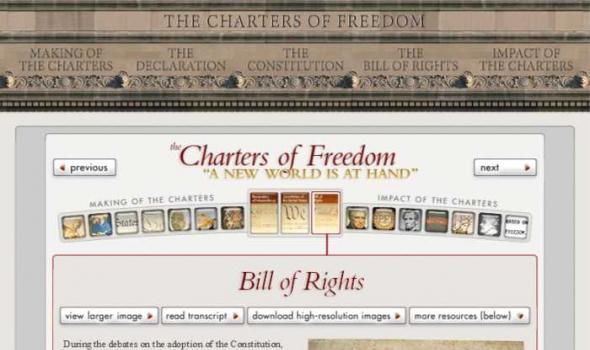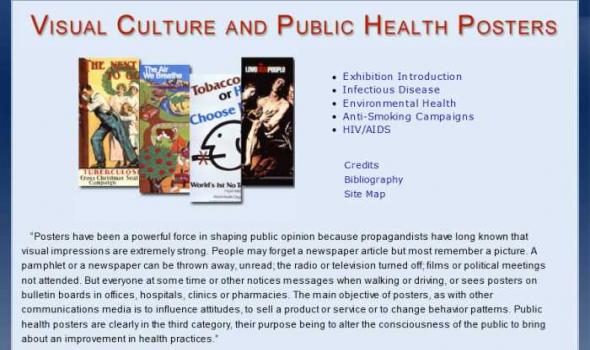Category: Image, Social Issues, Maryland
Results
During the debates on the adoption of the Constitution, its opponents repeatedly charged that the Constitution as drafted would open the way to tyranny by the central government. Fresh in their minds was the memory of the British violation of civil rights before and during the Revolution. They demanded a "bill of rights" that would spell out the immunities of individual citizens.
History of Medicine Exhibition Introduction This online exhibit is designed to introduce you to the history of images used in public health posters in the twentieth century. It utilizes the world's largest collection of poster art dealing with questions of health in the United States, housed at the National Library of Medicine. Many of these images can also be viewed through the Images from the History of Medicine (IHM) homepage. The exhibit is divided into two sections that focus on infectious diseases and environmental health concerns, revealing how posters provide an effective medium for communicating information about disease, identifying risk factors, and promoting behavioral change.
History of Medicine Introduction The National Library of Medicine has recently acquired a large collection of Chinese Public Health materials, about seven thousand items produced from early 20th century to the year of SARS. The collection has a wide range of media presentations: posters, health newsletters, health newspapers, paintings, pharmaceutical advertisements, calendars, children's chess games, jigsaw puzzles on health topics, playing cards on SARS, lantern slides, negatives, photographs, and health award certificates, as well as books and journals. These materials present rich visual representations of public health concerns which were closely tied to the political, social, economic, and even military engagements of China during different time periods.
History of Medicine Home > History Home > Opening Doors: Contemporary African American Academic Surgeons Home African Americans have always practiced medicine, whether as physicians, healers, midwives, or “root doctors.” The journey of the African American physician from pre-Civil War to modern day America has been a challenging one. Early black pioneer physicians not only became skilled practitioners, they became trailblazers and educators paving the way for future physicians, surgeons, and nurses, and opening doors to better health care for the African American community.
History of Medicine Introduction Over the ages, philosophers, theologians, and physicians had accepted insanity disorders within their purview. By the late 18th century, however, the first two had largely withdrawn and physicians, social activists, and the state took responsibility for the care and treatment of the mentally ill. Psychiatry as a medical discipline came into being during the first years of the 19th century. The rapidly growing population of the United States during the 19th century, along with an ever increasing number of immigrants, gave rise to the need for provision for the poor, the sick, and the mentally ill. Publicly supported almshouses and hospitals were established and the special needs of the mentally ill led to the era of asylums.
History of Medicine John Ballard Blake, Ph.D. Historian John Blake made significant contributions to the field of medical history. He was educated at Yale, BA, 1943, with Honors in History, Harvard, MA, 1947, and Ph.D., 1954, in American history. He was among the first generation of historians of medicine to come out of history departments, rather than clinical medicine, and he helped integrate the subject into the broader field of social history. His interests were primarily the history of public health in America and women’s history. His books and articles dealt with public health in 18th and early 19th century Boston, medicine in colonial America, and women and medicine in 19th century America.
History of Medicine The tragedy of the AIDS epidemic brought about an outpouring of items, intended to educate the public about the disease and its consequences. Starting in the early 1980s—AIDS was first identified in 1981—the initial response to the disease generated ephemeral public health materials, such as buttons, posters, cards, comic books, and even lunch boxes. Since AIDS was both incurable and invariably fatal, these messages of prevention were the only effective steps that public health officials could take. Produced by government health departments as well as private organizations, these ephemeral objects became an important medium for messages of awareness, prevention, compassion, and responsibility.






















